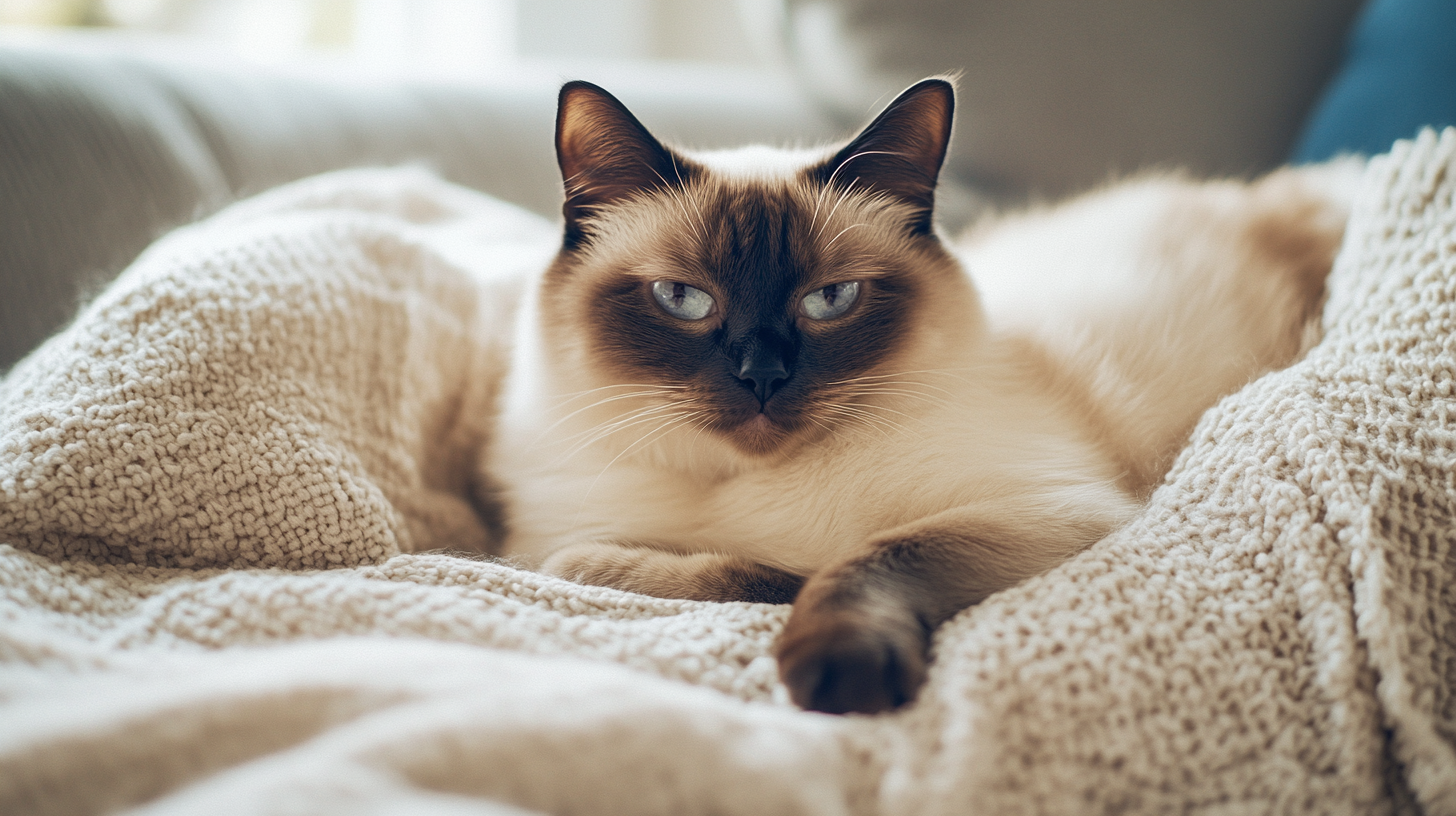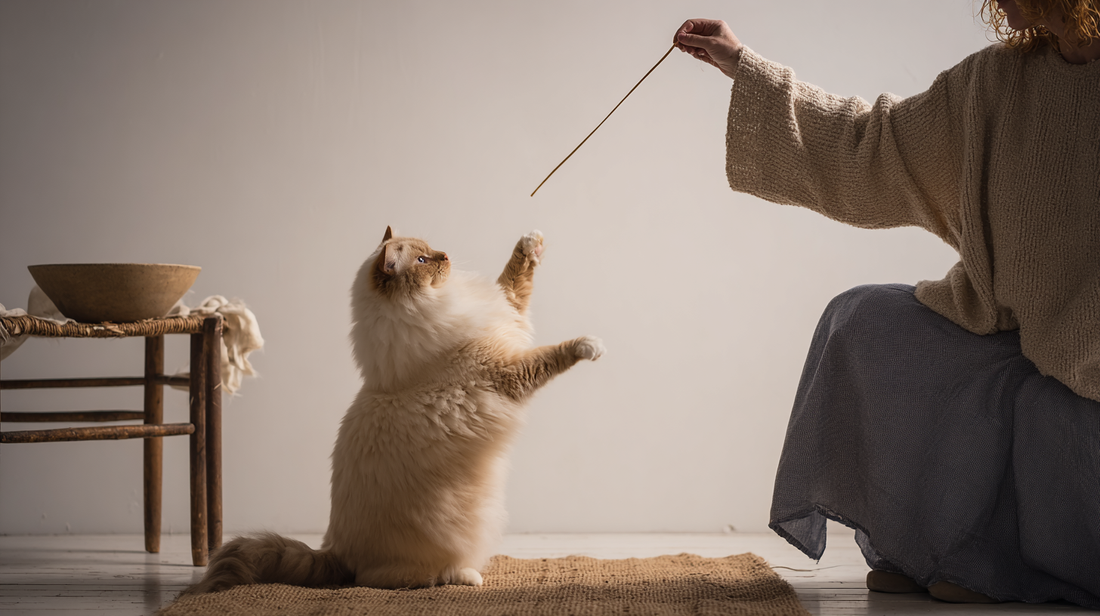As devoted cat owners, we notice subtle changes in our feline companions, particularly as they age. An older cat visiting the water bowl more frequently or making more trips to the litter box might be showing signs of underlying health issues. Two significant conditions in feline health are upper urolithiasis (stones in the kidneys and ureters) and chronic kidney disease (CKD).
Often considered separately, these conditions can be intricately connected with significant implications for your cat's health. This article explores this important relationship, helping you understand how upper urinary tract stones can contribute to chronic kidney disease, recognize risk factors, and take proactive steps for your cat's health.
Summary
Understanding the upper urinary tract and stone formation
What are upper urinary tract stones?
Why are upper urinary tract stones a problem?
These stones pose significant health risks to your cat. They can cause obstruction, particularly when a stone moves from the kidney into a narrow ureter. A blockage prevents normal urine flow, causing pressure buildup within the kidney. This pressure leads to pain and can damage delicate kidney tissue over time.
Concerningly, if only one kidney is affected or a slow, partial obstruction occurs, your cat might not show obvious illness signs in early stages. This "silent" damage can progressively impair kidney function unnoticed.
Chronic kidney disease in cats: A brief overview
Chronic kidney disease is common in older cats, characterized by gradual, irreversible decline in kidney function. Your cat's kidneys filter waste from blood, regulate fluid balance, control blood pressure, and produce essential hormones.
As CKD progresses, the kidneys become less efficient, leading to toxin buildup and various systemic effects. Common signs include increased thirst and urination, weight loss, decreased appetite, lethargy, vomiting, and poor coat quality . CKD can arise from various causes, though in many cases, the exact origin remains unknown.

How upper urinary tract stones can contribute to CKD
The connection between these conditions lies in stones' potential to cause direct and indirect kidney damage over time. Even temporary or partial obstruction can injure the nephrons (functional units of the kidney). This repeated or chronic damage can lead to progressive kidney function loss, contributing to CKD development or worsening.
A concerning aspect is "silent" damage. With stones in only one kidney, your cat might not show immediate kidney disease signs as the healthy kidney compensates. However, ongoing damage in the affected kidney can still lead to gradual overall kidney function decline.
A study found that 73% of 140 cats with CKD had concurrent upper urolithiasis, suggesting a strong association between these conditions. Among these cats, nephroliths were identified in 69% and ureteroliths in 80%, with 50% having both.
Risk factors: Identifying cats at higher risk
Research has identified factors increasing the likelihood of upper urolithiasis in cats with CKD. Purebred cats have a higher predisposition, with an odds ratio of 81.56 (P = 0.03), indicating significantly increased risk compared to crossbred cats.
Diet plays a crucial role in your cat's urinary health. Cats fed dry food only showed a strong association with upper urolithiasis in CKD, with an odds ratio of 25.06 (P = 0.001). This likely relates to lower overall water intake leading to more concentrated urine, increasing mineral saturation and promoting crystal formation.
Additionally, cats with upper urolithiasis were more likely to be exclusively fed urine-acidifying food (P < 0.001). While these diets manage lower urinary tract issues like struvite stones, they can potentially increase calcium oxalate stone risk in the upper tract.

Warning signs: What to watch for in your cat
Recognizing upper urinary tract stone signs can be challenging, particularly early or with single kidney involvement. Signs can be subtle and overlap with other conditions, including CKD itself. Potential indicators include:
Changes in urination habits (frequency or volume)
Blood in urine (haematuria)
Pain signs (licking flank area, restlessness, hunched posture)
Lethargy or decreased activity
Decreased appetite
Remember common CKD signs: increased thirst and urination, weight loss, decreased appetite, vomiting, and lethargy. Consult your veterinarian promptly if you observe any health or behavior changes in your cat. Early detection is key to managing both conditions effectively.
How your vet can detect upper urinary tract stones
Routine veterinary check-ups are vital, especially for your aging cat. These often include physical examination and basic blood and urine tests. If CKD is suspected or specific urinary tract issue signs appear, your veterinarian may recommend further diagnostic tests.
Abdominal ultrasonography effectively identifies kidney and ureter stones, using sound waves to create real-time internal organ images of your cat. X-rays may also be used, as some stones are more visible on radiographs. Further urine analysis, including culture, may be recommended to assess for concurrent urinary tract infections.

Treatment and prevention: Protecting your cat's kidneys
Management of upper urinary tract stones
Management depends on the stone's size, location, mineral composition, and whether they cause obstruction, pain, or impact kidney function in your cat. Treatment ranges from conservative medical management to invasive procedures. Some stones, like infection-associated struvite uroliths, may dissolve through dietary and medication changes. However, calcium oxalate stones generally cannot be dissolved medically.
Veterinary advancements include minimally invasive procedures like laser lithotripsy, breaking stones into smaller fragments for passage or removal. For obstructive ureteroliths, ureteral stenting may be necessary, placing a small tube within the ureter to bypass obstruction. Traditional surgical removal may still be required in some cases for your cat.
Prevention strategies for long-term kidney health
Preventing formation or recurrence of upper urinary tract stones is crucial, especially in cats with or at risk of CKD:
Increase Water Intake: ensure your cat stays properly hydrated to dilute urine by feeding high-moisture foods and providing multiple fresh water sources or a circulating fountain.
Dietary Considerations: discuss your cat's diet with your veterinarian, especially regarding moisture content. Avoid urine-acidifying diets without specific guidance, particularly with calcium oxalate stone history or risk. Therapeutic foods specifically formulated to reduce calcium oxalate stone risk are available under veterinary guidance.
Regular Veterinary Check-ups: routine examinations, including urine analysis, can detect early urinary tract issues or urine composition changes indicating increased stone formation risk in your cat.
Proactive care for your cat's kidney health
The relationship between upper urinary tract stones and CKD in cats is significant, with research showing high concurrent upper urolithiasis prevalence in CKD cats. Understanding this connection, recognizing risk factors (breed, diet), and watching for subtle signs are crucial for proactive care of your feline companion.
Early detection through regular veterinary check-ups and appropriate imaging plays a vital role in effective management. Support your cat's kidney health by ensuring plenty of fresh water, discussing diet with your veterinarian, and promptly reporting urination habits or general health changes.
The information in this article is based on the following scientific publications:
Hsu, H., Ueno, S., Miyakawa, H., Ogawa, M., Miyagawa, Y. and Takemura, N. (2022). Upper urolithiasis in cats with chronic kidney disease: prevalence and investigation of serum and urinary calcium concentrations. Journal of Feline Medicine and Surgery, 24(6), pp. e70-e75.
Lulich, J.P., Berent, A.C., Adams, L.G., Westropp, J.L., Bartges, J.W. and Osborne, C.A. (2016). ACVIM small animal consensus recommendations on the treatment and prevention of uroliths in dogs and cats. Journal of Veterinary Internal Medicine, 30(5), pp. 1564-1574.
Martos, C.M.P. and Tirado, F.J.F. (2020). Chronic kidney disease. Servet editorial - Grupo Asís Biomedia, SL.
White, J.D., Malik, R. and Norris, J.M. (2011). Feline chronic kidney disease: Can we move from treatment to prevention? The Veterinary Journal, 190(3), pp. 317-322.
Looking for a solution? Start here
Stylla Hydration for cats
Supports optimal hydration with amino acid-based formulation
- Encourages drinking with amino acid flavour enhancers
- Supports urinary health through increased water intake
- Promotes kidney function with specialised ingredients
Made in Switzerland with strict quality standards





